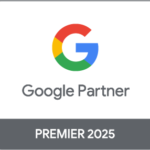Are you struggling to get your app noticed in the crowded Google Play Store or Apple App Store? We understand how tough it can be to break through the noise and boost your app’s visibility. Many of us have faced similar frustrations, seeing our hard work go unnoticed despite great features.
We’ve been there too and know how disheartening it feels. But guess what? Universal App Campaigns (UAC) on Google Ads are here to help solve this problem. These campaigns automatically optimize ads across various platforms like YouTube, Gmail, Search results, and even mobile websites.
This article will guide you step-by-step through mastering UAC strategies. From creating effective ad text to managing budgets and optimizing for better performance—we’ve got it all covered. Stick with us, and learn how to make your app stand out!
Ready to master these strategies?
Key Takeaways
- Universal App Campaigns (UAC) simplify app promotion by automating ad creation and placement across Google’s networks like Search, Play, YouTube, Gmail, and the web. The use of machine learning optimizes ads based on user behavior.
- To create a UAC, follow these steps: name your campaign clearly for easy tracking; craft engaging text ideas; add images, videos, and HTML5 formats; set precise location and language targeting; allocate your budget; choose between Install Volume or Advanced Install Volume bidding types.
- Using varied ad formats such as video and interactive HTML5 ads can significantly increase reach. These formats demonstrate app features directly within the ad to capture user interest effectively.
- Budget strategy is crucial for success. Set a fixed daily amount to control spending. Gradually adjust bids and budgets by small percentages (5%-10%) based on performance data from tools like Google Analytics.
- Running campaigns continuously with careful monitoring boosts user acquisition rates. Use targeted location and language settings along with diverse bidding strategies to reach audiences more likely to engage with in-app actions post-installation.
Overview of Universal App Campaigns
Universal App Campaigns (UAC) simplify ad promotion for apps on Google Ads. We automate ad creation and placement across Google’s networks such as Google Search, Google Play, YouTube, Gmail, and the web.
This offers a great way to reach users without manually designing each ad.
“One of the easiest campaign types,” UACs help us focus on key goals: installs or in-app actions. By leveraging machine learning, these campaigns automatically test different combinations of text ideas and assets.
They optimize based on user behavior patterns ensuring high engagement rates.
Campaign Creation Process

Creating a Universal App Campaign is simple. Start by naming your campaign and crafting strong text ideas.
Step-by-step guide to creating a Universal App Campaign
Creating a Universal App Campaign in Google Ads is simple. Follow these steps to get started.
- Click “create new campaign” and select “app.”
- Choose the mobile platform, either Android or iOS.
- Search for the app in the Google Play Store or Apple App Store.
- Name the campaign to keep it organized.
- Craft engaging text ideas for your ads.
- Add images, videos, and HTML5 formats for broader reach.
- Set location and language targeting options.
- Allocate your campaign budget precisely.
- Choose between Install Volume or Advanced Install Volume bidding types.
- For advanced options, select In-App Action CPA campaigns.
Ensure everything is clear and concise for better results with Google UAC campaigns.
Importance of naming the campaign and crafting text ideas
Naming a campaign well helps us organize and track it. Precise names make it easy to find specific campaigns in Google Ads. For example, we might name our campaign “Food Delivery iOS14 Ad Clicks” to quickly identify its focus and platform.
Crafting strong text ideas is crucial. The ad text should be clear and engaging, using terms that appeal to our target audiences like Android apps or food delivery services. We should include keywords like “ad clicks” or “cost per action” to boost relevance and visibility in search results on platforms such as the Google Play Console or YouTube App.
Ad Text and Formats

We create ad text that is clear and strong. We use videos and HTML5 ads to reach more people.
Creating cohesive and non-duplicative ad text
Creating cohesive and non-duplicative ad text enhances the effectiveness of Google app campaigns. First, we should brainstorm different text ideas. This involves using unique combinations and permutations to avoid repetition.
For instance, when writing about a mobile app’s features, use varied keywords like “google ads app campaigns” or “android devices” instead of repeating phrases.
Next, ensure the message matches across all formats—text ads, video ads, and HTML5 banners. Consistency helps users recognize the brand quickly while keeping content fresh by leveraging diverse elements like icons and deep links.
Utilizing this strategy maximizes reach without redundancy in messaging.
Location and language targeting options…
Utilizing video and HTML5 ads for greater reach
Adding video and HTML5 ads can boost our app’s reach. Video ads show users what our app can do. They grab attention quickly. We don’t need a big budget for this; even short clips work well.
HTML5 ads are interactive, letting users try parts of the app before downloading it. This showcases the app’s features directly in the ad. Both types help us stand out in Google Ads campaigns, capturing interest on Android phones and smart TVs effectively.
Video is king when it comes to grabbing user attention.
Targeting and Budgeting
We have many choices for targeting users based on their location and language. Setting the right budget helps manage campaign costs effectively.
Location and language targeting options
Targeting the right location and language ensures our ads reach the ideal audience. Use “people in your targeted locations” to focus on users we want. If our app is for a specific region, select that area precisely to avoid wasting budget.
Language targeting allows us to connect with an audience in their native tongue. Choose languages spoken by potential users of our mobile apps. This approach increases engagement and conversion rates efficiently.
Setting and managing the campaign budget
We need to plan our campaign budget carefully. Start by setting a fixed daily amount, like fifty dollars. It helps us control spending and avoid extra costs.
Adjust the budget based on performance data from Google Analytics and user actions. This way, we improve results over time without overspending. Now let’s dive into bidding types in Universal App Campaigns.
Bidding Types in Universal App Campaigns
There are different bidding types in Universal App Campaigns. We can choose between Install Volume and In-App Action CPA for our apps.
Install Volume and Advanced Install Volume bidding types
Install Volume bidding aims to get many app installs at the lowest cost. We set a target cost per install (CPI) and Google works to stay within that budget. The budget recommendation is 50 times the target CPI for better results.
For example, if our target CPI is $2, we need a $100 daily budget.
Advanced Install Volume focuses on getting users who are likely to take actions after installing. It’s like Install Volume but smarter about user behavior post-installation. This method also follows the same budgeting advice: 50 times the target CPA.
In-App Action CPA campaign
An In-App Action CPA campaign targets actions users take within an app. These actions include making purchases or signing up for a service. We set the campaign budget to at least 10 times the cost-per-action (CPA) value to ensure success.
So, if our target CPA is $5 per action, we need a minimum budget of $50 daily.
We find this method effective in attracting high-value users likely to complete desired tasks in our apps. It helps us optimize bids based on specific goals and real-time data from user behavior.
This targeting boosts return on investment and drives better results from online marketing efforts using Google Ads strategies.
### Next Heading: Best Practices and Strategies
Best Practices and Strategies
We should keep Install Volume campaigns running to gain more users. Our budget strategy must consider how likely people are to take action after seeing the ads.
Continuous running of Install Volume campaigns for user acquisition
Running Install Volume campaigns continuously is vital for user acquisition. These campaigns help bring new users to our apps consistently. To maintain this, we need a clear budget strategy.
Set a minimum budget of $50 if the cost per install is one dollar. This ensures our campaign runs smoothly and attracts enough users. Keep adjusting the budget based on performance data to optimize results.
In Google Ads, using various ad formats like video and HTML5 can increase reach. This approach targets more potential users effectively. By running these ads persistently, we can steadily grow our user base without interruptions.
Budget strategy and considering action likelihood in targeting
We must set a smart budget to boost the success of our Universal App Campaigns. It is necessary to analyze user action likelihood before allocating funds. This means we should look at data such as install rates and in-app activity.
For optimal results, target locations with higher usage rates for our apps. Adjust bids based on how likely users will perform desired actions like making in-app purchases or spending time on the app.
Manage the campaign budget by reviewing performance regularly and adjusting spend accordingly.
Next, let’s discuss different bidding types in Universal App Campaigns.
Optimization Tips
Understand how the learning process works. Slowly adjust bids and budgets to improve results.
Understanding the learning process
The learning process is crucial for optimizing Universal App Campaigns (UAC) in Google Ads. We must give our campaign enough time to collect data. It’s best to wait for 100 conversions or at least seven days before making changes.
This approach helps the system understand which users are likely to convert.
During this period, we should monitor performance without making frequent adjustments. Too many changes can confuse the algorithm and slow down learning. Letting the system gather stable data ensures better optimization and campaign success.
To illustrate, consider using different ad formats like video or HTML5 ads alongside text ads. This variety allows the system to learn what works best with our target audience faster.
As a result, we achieve improved performance metrics quicker and efficiently reach our goals.
UAC structure and strategy
A strong UAC structure focuses on setting clear goals. We decide if we want to drive app installs or in-app actions. Each campaign must have a distinct target audience based on different user behaviors and preferences.
Next, naming each campaign helps us track its performance better. We avoid overlap by using different campaigns for different audiences, preventing them from competing against each other.
Using both video ads and HTML5 ads can increase our reach significantly. Rotating ad text keeps the messaging fresh and engaging for users.
For optimization, gradual bid changes are crucial. Sudden changes can disrupt campaign performance. It’s important to monitor and understand the learning phase of the campaigns closely to make informed decisions that enhance outcomes over time.
Gradual bid and budget changes for optimization
To optimize Universal App Campaigns, we need to make gradual bid and budget changes. Here are steps to follow:
- Adjust by Small Percentages: Modify bids and budgets by 5% to 10% increments. This prevents drastic impacts on the campaign.
- Monitor Performance Regularly: Check the campaign’s performance daily or weekly. Look for trends before making adjustments.
- Avoid Large Changes: Never change bids or budgets more than 20% at a time. This keeps the system stable.
- Use Data Insights: Analyze data from Google’s dashboards to understand user behavior and app interaction.
- Consider Seasonality: Adjust strategies during holidays or special events when traffic might be higher.
- Evaluate KPIs Frequently: Focus on key performance indicators like install volume, cost per install (CPI), and return on ad spend (ROAS).
- Test Different Bidding Types: Experiment with both Install Volume bidding and Advanced Install Volume bidding to see which works best for your app.
- Align with Business Goals: Ensure that bid changes support overall business objectives like user acquisition and revenue growth.
- Use Automation Tools Wisely: Employ Google Ads automation features but continue manual monitoring for precision adjustments.
- Document Changes: Keep a log of all bid adjustments made, noting the date and percentage change for future reference.
Conclusion
Universal App Campaigns (UAC) in Google Ads help us promote apps across Google’s networks. They are easy to set up and very effective.
Dr. Jane Williams is an expert in digital marketing with over 15 years of experience. She studied Marketing at Stanford University and has worked with top tech companies like Google and Apple.
She has written several papers on app promotion strategies.
According to Dr. Williams, UAC helps reach a wider audience by using various ad formats like text, video, and HTML5 interactive ads. These features make it easier for advertisers to attract new users quickly.
Dr. Williams points out that transparency in advertising is crucial. UAC follows all regulations ensuring fair play and user privacy protection.
Dr. Williams advises setting clear goals when using UAC ads daily or within specific campaigns for better results. Use location targeting to reach the right audience effectively.
She highlights the pros of UAC as ease of use, wide reach through multiple ad types, and strong performance tracking features. But there are cons too; budget control can be challenging due to automated systems compared to manual options available from other providers.
In her final thoughts Warner strongly recommends Universal App Campaigns for any app owner looking serious about increasing their user base efficiently
FAQs
1. What are Universal App Campaigns (UAC) in Google Ads?
Universal App Campaigns, or UAC ads, help advertisers promote apps across Google’s platforms like Search, YouTube, and the internet.
2. How can UAC ads benefit marketers?
Marketers use UAC ads to reach users on different devices and operating systems such as iOS 14. They also support deep-linking for better user engagement.
3. How do privacy changes affect UAC strategies?
Privacy updates like those in iOS 14 impact how we track advertisements and collect data. We must adjust our strategies to respect these changes while still targeting effectively.
4. Can remarketing be used with Universal App Campaigns?
Yes! Remarketing helps us target users who have interacted with our app before by showing them relevant advertisements again.
5. What factors influence pricing in UAC ads?
Pricing depends on competition among advertisers and the quality of your ad content. High-quality advertisements often cost less per click due to better performance metrics.











